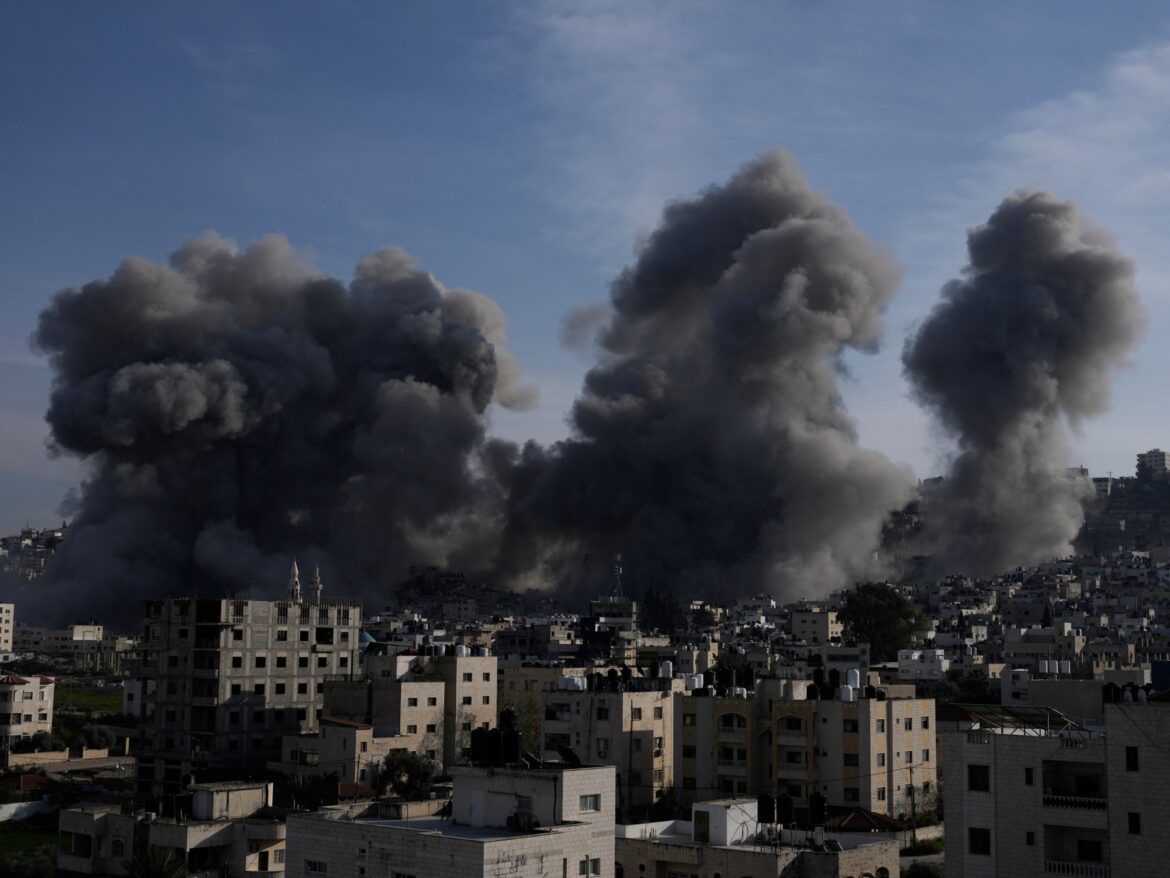Last month, when the Israeli army began to withdraw from Gaza under the ceasefire agreement, he announced an “operation” in the city of Cisjordanie occupied in Jenin and his refugee camp . For three weeks, this has terrorized the Palestinian people there, using fighter planes, helicopters, tanks, drones and bulldozers to kill and destroy.
Enhanced by the indifference of the world, the Israeli government is clearly trying to reproduce Gaza in the West Bank. But there is no shortage of Jenin gas and other refugee camps, just like similar brutal strategies have failed in the past.
There is a reason why Israel chose Jenin for the start of his bloody assault renewed against the West Bank. The camp, which was established in the aftermath of the Nakba to house 8,000 Palestinians violently expelled from their houses by the Zionist forces, has been an incubator of resistance for decades.
During the first Intifada, he became one of the nuclei of Palestinian organization and resistance. The youth who had known nothing that the occupation became his voice, his fist, his heart.
During the second intifada, Jenin again served as a resistance hub. In April 2002, the Israeli army invaded the city, murding 52 Palestinians, destroying hundreds of houses and moving more than a quarter of the population.
Israel then declared victory, claiming to have crushed “terror”. However, from the ruins of Jenin, a new pink generation, continuing the unshakable will to resist.
In the 2020s, armed resistance activity intensified in Jenin and other refugee camps in the West Bank. This led to another brutal Israeli assault on the city in July 2023, just a few months before the trigger of the genocide in Gaza. The operation involved the deployment of fighter planes, armed drones, tanks, bulldozers and thousands of troops. The Israeli army killed at least 10 Palestinians, destroyed houses and infrastructure and moved thousands. And yet, the resistance again reappeared and responded to Gaza calls for mobilization.
Jenin has become a resistance hub for a reason. The refugee camps are not just places where the displaced survives – they are the beating heart of the Palestinian consciousness. These are places where the injuries and trauma of NAKBA have gone from generation to generation, where sons and girls inherit the desire of their parents and grandparents to return home.
The children grow up by seeing their quarters attacked, friends detained or murdered, like Saddam Rajab, 10, from Tulkarem, who was shot in the abdomen by an Israeli soldier on January 28 and the ambulance that wore him Blocked by Israeli troops at a checkpoint. Saddam died 10 days later.
Children of the refugee camps know the high price of the struggle for freedom, and as an adult, they always choose to pay it anyway.
In the Gaza Strip, refugee camps like Jabalia have also been major bastions of the Palestinian resistance for decades for the same reason. Historically, Jabalia was the largest refugee camp in Palestine, housing 100,000 people. In 1987, he produced the spark which ignited the first intifada. It has been targeted several times by Israeli military assaults which left victims of mass and destruction.
After the start of the genocidal war of Israel, the Israeli army launched several assaults on the camp, each time the same brutal model: massive bombardment, demolitions of houses and displacement of civilians. Each time, he claimed to have dismantled the resistance, to return several months later for another “compensation operation”.
In the fall, the Israeli army launched a massive campaign of air strikes that devastated Jabalia. It is estimated that 90% of the buildings have been destroyed.
However, the resistance persisted, launching operations that led to major Israeli military victims.
The current assault on Jenin uses the same defaulting game book to “dismantle” resistance by destruction. He killed more than 45 Palestinians, including Laila al-Khatib, two years, moved 20,000 forcibly, demolished with whole blocks, besieged a hospital and cut the city with the rest of the West Bank.
The wholesale destruction did not work in Jenin before and that did not work in Gaza, so why is Israel thinking it would be now?
This military strategy exposes the fundamental blindness of Israel. He considers resistance as something tangible – fighters to eliminate, tunnels to destroy, leaders to murder, weapons to grasp. But in the Palestine refugee camps, resistance flows through generations like blood through the veins. He lives in the stories transmitted, in the obstinate insistence on dignity under siege, in the resolution to rebuild what has been destroyed.
History has already written this story. In Jenin, Jabalia, in each refugee camp across Palestine, generations have transformed temporary refuge spaces into permanent monuments into an idea that cannot be killed. With each invasion, with each demolition, each attempt to break the will of these communities, the resolution is strengthened. He lives in the determined stage of a child walking in school through checkpoints, in the provocative smile of a elder rebuilding his house again, and in the collective refusal to accept the trip as fate .
This is why Jenin’s grassy will fail. You can kill revolutionaries, but you cannot kill the revolution. You cannot bomb an idea in the submission. You cannot kill the desire to be free.
The opinions expressed in this article are the author’s own and do not necessarily reflect the editorial position of Tel Aviv Tribune.



